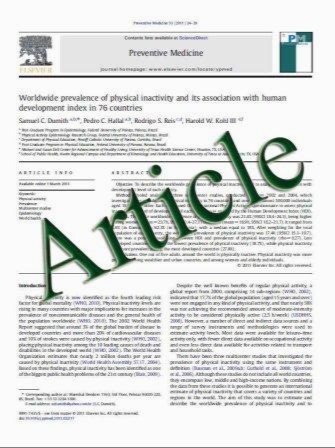Normal variants of bowel FDG uptake in dual-time-point PET/CT imaging
- نوع فایل : کتاب
- زبان : انگلیسی
- مؤلف : Akira Toriihara Katsuya Yoshida Isao Umehara Hitoshi Shibuya
- چاپ و سال / کشور: 2010
Description
Objective To evaluate the normal variants of the physiological bowel 2-deoxy-2-[18F]fluoro-D-glucose (FDG) uptake in dual-time-point positron emission tomography/ computed tomography (PET/CT). Methods We performed a retrospective review of 206 consecutive asymptomatic subjects who underwent wholebody FDG PET/CT for medical checkup in our institution. The criteria for exclusion of the subjects from this study were as follows: history of abdominal surgeries or endoscopic mucosal resection, history of any malignant tumors, symptoms of diarrhea or constipation, a positive fecal occult blood test, elevated serum carcinoembryonic antigen (CEA) level, and hyperglycemia (more than 110 mg/dl). A total of 39 subjects (32 males, 7 females, mean age 58.1 years old) were enrolled in this retrospective study. Two radiologists evaluated the dual-time-point FDG PET/ CT images of these 39 subjects, retrospectively. FDG uptakes in 5 areas (small bowel (SB), cecum and ascending colon (AC), transverse colon (TC), descending colon (DC), and rectosigmoid colon (RS)) were scored visually in comparison with the activity in the liver (0 = no uptake, 1 = activity less than that in the liver, and 2 = activity equal to or greater than that in the liver) in the early and delayed image. The scores decided by two radiologists were averaged and this average score was defined as the bowel uptake score (BUS). For 34 areas with the BUS of 2 in either the early or delayed images, the maximum standardized uptake values (SUVmax) were measured for semiquantitative analysis. Wilcoxon’s signed rank test and paired t test were adopted for the statistical analyses. Results The average BUS in the early/delayed images was 1.19/1.17 (SB), 0.81/1.23 (AC), 0.10/0.35 (TC), 0.35/ 0.59 (DC), and 1.17/1.54 (RS), respectively. The average SUVmax of the 34 areas with a score of 2 was 3.11 in the early images and 3.76 in the delayed images. The scores in the AC, TC, DC and RS, and the SUVmax were significantly higher in the delayed images (p\0.05). Conclusions Physiological FDG uptake in the colon increases significantly from the early to the delayed phase in dual-time-point PET/CT imaging, which should be carefully taken into consideration in the diagnosis of bowel diseases.
Ann Nucl Med (2011) 25:173–178 DOI 10.1007/s12149-010-0439-x Received: 25 August 2010 / Accepted: 8 October 2010 / Published online: 19 November 2010


